Expand your horizons, expand your fitness: Is touring effective training?
There’s no doubting the mind-expanding pleasure of cutting loose on an epic adventure through stunning landscapes, but can such escapes also enhance your competitive fitness? Chris Marshall-Bell goes on a voyage of discovery
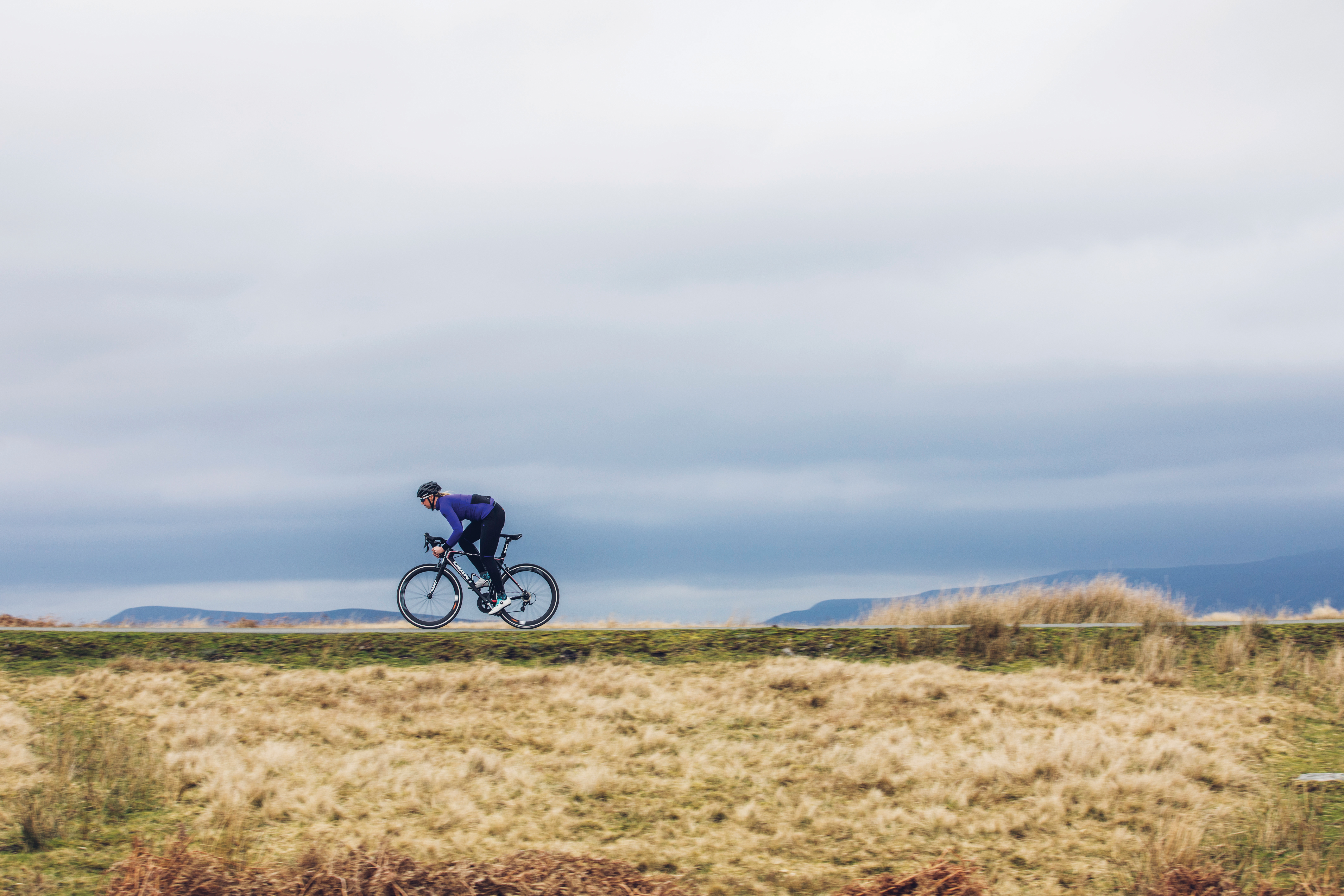

Cycle touring has made a triumphant return to the public limelight in recent months. The niche yet age-old discipline was thrust back into the minds of cyclists around the world thanks to the endeavours of a host of professionals. Bikes were loaded with panniers and saddlebags as riders set off on a journey of exploration, traversing continents, making memories that will last a lifetime and, with it, inadvertently improving their fitness levels. The question is, should we all be following suit? Is touring really an effective form of training?
>>> The NoGo Tour: How to get your cycling mojo back after your team folds
Conor Dunne and Larry Warbasse’s NoGo Tour through the Alps was a social media sensation; the Lotto-Soudal pairing of Thomas de Gendt and Tim Wellens cycled home from Il Lombardia to Belgium; and British track star Rachel James went on an even more impressive tour, riding across the USA for three months last summer with her husband Luke as part of their honeymoon.
Touring, whether just for the length of a weekend, a week or a number of months in familiar or new landscapes, is an easy way to introduce adventure into one’s riding, and with it develop fitness that can assist with race preparation.
Of course, touring isn’t a new phenomenon. Hannah Reynolds, an international cycle guide for Skedaddle and author of France en Vélo, tells us: “It’s come back into fashion and been brought back into people’s imagination in a way that hasn’t been there for 20 or 30 years. Our grandparents’ generation used to ride 100 miles to hostels regularly, and touring was a normal, usual part of training.”
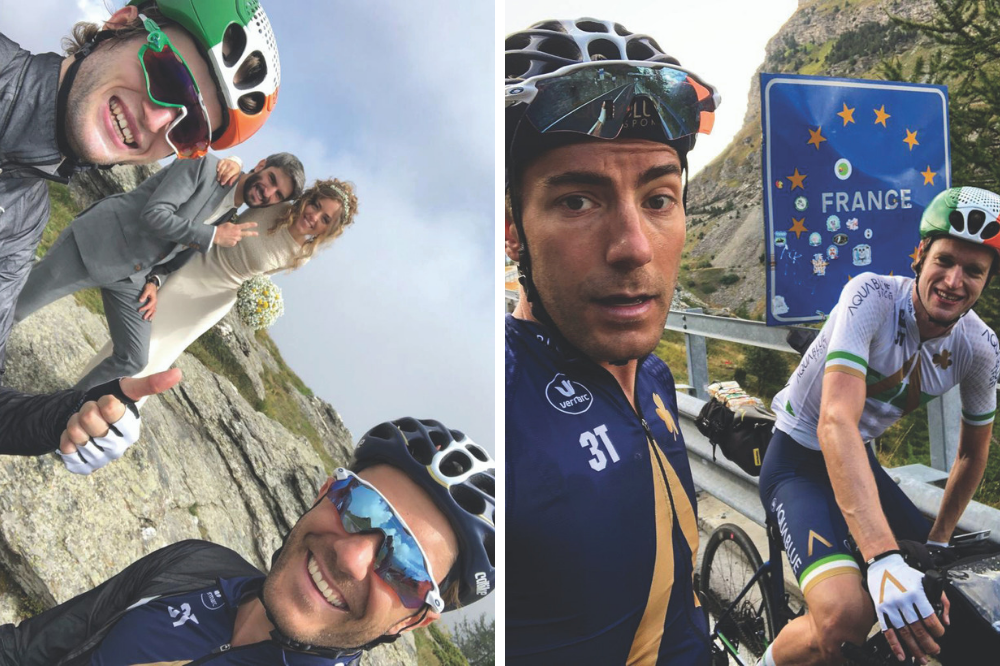
Which raises the question: can long-distance touring be an achievable, successful part of a training schedule for amateur riders like you and me?
Get The Leadout Newsletter
The latest race content, interviews, features, reviews and expert buying guides, direct to your inbox!
Touring miles, racing smiles
All the pros mentioned above returned home touting the benefits of touring, reporting feeling significantly better from their excursions.
“It was the best endurance training we could have had,” De Gendt says. “We rode 35 hours in six days. A few months later when I had a fitness test during pre-season, my condition was better than it had been in any previous years, and that’s just because we rode 1,000km in the last week of our season. I already have a really good base fitness for this season.”
His ride partner Tim Wellens muses: “If we had raced after the trip, we both would have been super good.”
Dunne and Warbasse rode almost 50 hours in eight days. “It was a huge, huge week,” Dunne says. “Larry and I thought we would be super-tired after, but we really weren’t. We both responded to the volume well and definitely felt stronger.”
For Rachel James, three months of riding daily distances of around 100 miles transformed her. “At the start, riding 50 miles was a hard day. But it only took about 10 days to be able to ride for 100 miles without a bother and 50 miles was considered a morning cruise. My endurance has improved and I think these sorts of ride really help with base fitness.”
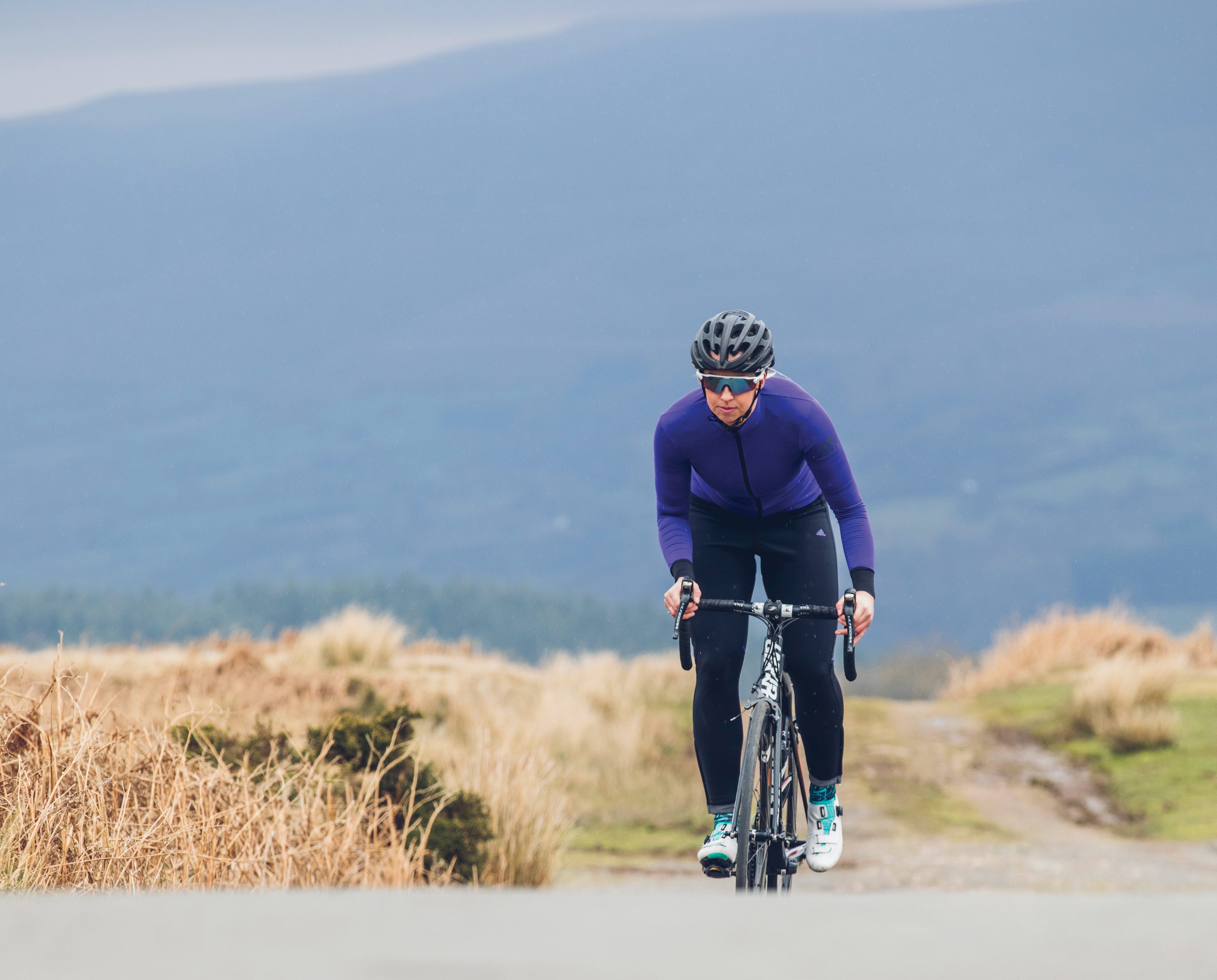
While the essence of touring is to see new landscapes and immerse oneself in an adventure at a comfortable, consistent pace, there are ways to include efforts and intervals to build competitive fitness. During their NoGo Tour, Dunne and Warbasse rode efforts during the week, the latter doing 30-minute intervals and torque efforts on some climbs. De Gendt and Wellens rode between 200 and 250 watts for most of the time, but there were sections when “we rode at full-gas and took turns at the front,” the latter reveals.
The added weight of a loaded bike — the NoGo Tour pair strapped 20kg of luggage onto their frames — is a natural training aid, according to Dunne: “Sometimes it was like riding with the brakes on. It was like doing torque training as it required a big adaptation to the body.”
Warbasse agrees: “It wouldn’t be the worst idea to do some rides with big packs on the bike because I swear that strapping all that weight to the bike made us stronger.”
Professor Louis Passfield of the University of Kent confirms that additional weight can have physiological benefits.
“Assuming you’re carrying kit, that adds resistance training,” he says. “It is likely to recruit a little more muscle to turn the pedals and you’re learning to spread the load over a wider number of muscle fibres.”
In other words, touring miles can have race-applicable benefits.
“You will be using fast-twitch muscle fibres but stimulating them like slow-twitch fibres, teaching them to become more aerobic. What you then have to do is translate that learning into your time trial, race or targeted event.”
Despite these potential gains, De Gendt prefers not to regard touring as training. “When you start looking at it as training, it’s not fun,” he says. “You have to look at it as something fun to do and the training benefit that comes with it is a bonus. If you train during it, you take the fun out of it and make it too serious.”
The Belgian calls into question whether touring, despite the outlined benefits, is an efficient use of time. Can it really get you race-fit?
“Touring will get you fit, but fit for what?” says Reynolds. “It’s good for base miles, particularly for an endurance rider, as it’s time on your bike and turning pedals, but the basic principle of building racing fitness is about specificity. For a cyclo-cross rider or someone racing criteriums, going out slowly for 100 miles with three or four cafe stops is not going to do their racing form much good.”
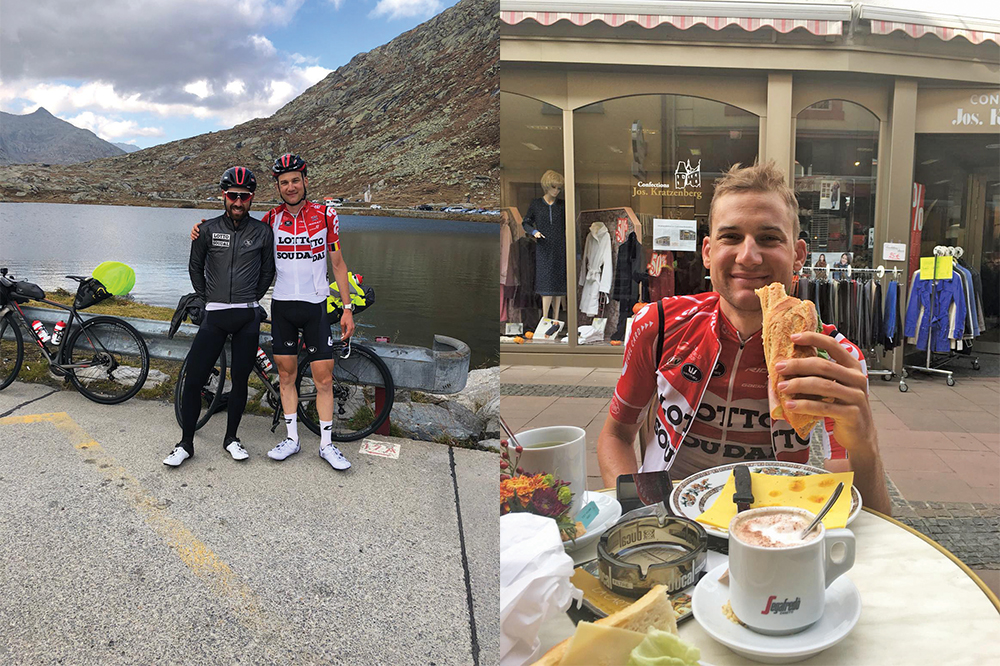
Reynolds is cautious of forgoing a specific plan designed to maximise the chances of achieving one’s goal in favour of going touring.
“It will never give you race sharpness,” she adds. “We need to have structured training plans which detail what intervals we should be doing, how long for, what zones we should be riding in, what efforts we should be doing on the turbo.”
There are ways to incorporate efforts into a touring ride, though, and if they take place towards the end of the ride “it is akin to a race situation when the required effort is more intense,” Passfield adds.
But neglecting high-intensity workouts in favour of long touring miles will leave you behind in your goal. “When the hammer goes down, or when you need to push the tempo, it’s no good being good later on if you can’t respond to the immediate additional effort,” he says.
The point is that touring cannot replicate or replace structured training plans. There is a reason why professionals don’t ride across regions and countries a few weeks before a race, and why your coach won’t recommend that you partake in Land’s End to John
o’ Groats a week before your key one-day race or time trial. But touring clearly does have its positives, most notably improving endurance.
So if touring is to become part of your season, when is the best time to do it?
Winter warmers
John Herety, a former rider and manager who was in charge of the now-defunct JLT-Condor between 2006 and 2018, believes that touring has its place in the winter months.
“During the off-season, I think it’s a really good idea. Training is unstructured and it’s about getting miles under your belt, that’s it,” he says. “If you have to do between 10-15 hours in the week, you can do that in two days and ride to a youth hostel or bed and breakfast.”
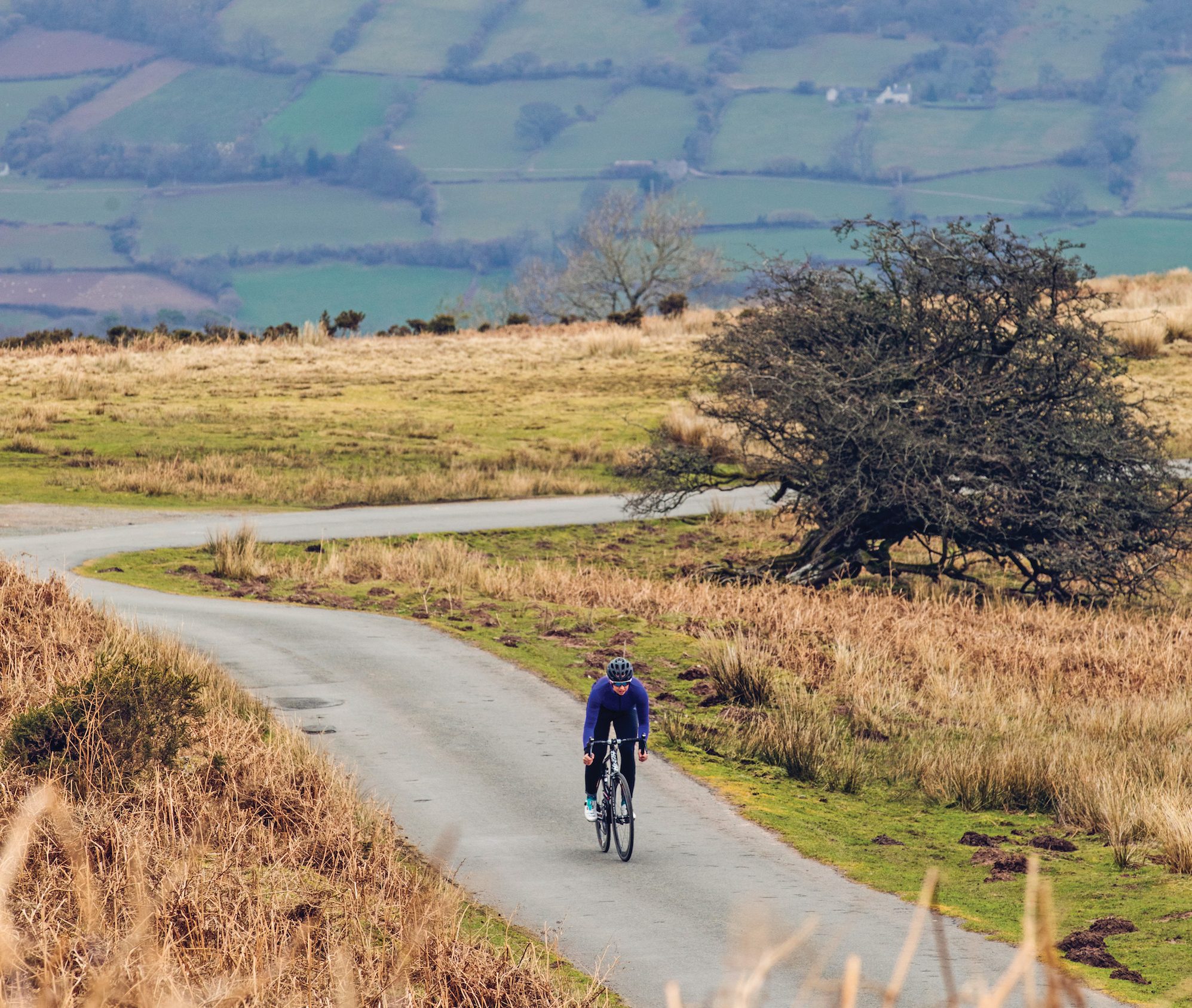
The idea of riding to a hostel is deeply ingrained in touring culture. Rather than doing two consecutive days of high mileage on the same roads, why not ride 70 miles to a destination, stay overnight and return home the next day? Herety notes the camaraderie such trips bring. “Something always happens on a weekend away,” he laughs. “Someone’s spoke will break, someone will get lost, or it will rain all day. When things go wrong, it’s the bad things you remember and that helps bonding.”
Of course, pre-season touring doesn’t have to be a ride through the English countryside in inclement weather. Warbasse, who intends to keep integrating touring into his training, questions the value of conventional training camps.
Touring vs training camp
“You stay at the top of a mountain, ride up and down the same passes every day, and there are limited options,” Warbasse says.
“During our trip we were riding past so many places at altitude that you could do an altitude camp while touring, staying at 1,800m elevation and a couple of nights in different places... It would be one of the most fun altitude training camps.”
This would require a sensible approach, though. A training camp is intended to provide significant fitness gains, where touring has the additional aims of being mentally refreshing, as well as adventurous. If touring was to merge with a training camp, one would have to monitor food and drink intake (don’t overindulge on wine and cheese), and give thought to efforts. Likewise, don’t forget to relax and enjoy your ride; it should be fun.

Touring doesn’t have to be strictly for the off-season, however. “There is a notion that we have to start the year with base miles and then slowly introduce intensity to take you to your peak,” says Passfield, “but it doesn’t have to be that way. We can be more flexible, adapt to the situation and that provides opportunity for touring.”
Though Passfield believes touring has value even mid-season, he cautions against disregarding high-intensity training, especially in the immediate days and weeks before a key goal. Riding without tempo or purpose can lead to the accumulation of too many “garbage miles”.
“A six-week period of high-intensity work makes a real difference,” he says. “You could maybe throw some touring in three weeks before a major goal and leave yourself a few weeks to fine-tune. Diversity is important but it has to be done right.”
You need to bear in mind the risk of becoming single-paced and losing your top-end ability.
“Touring will make you more like a diesel, but you need some high-octane fuel pushing through that engine so you need have to do intensity work afterwards.”
Would Wellens go touring in the lead-up to a race?
“It would pass the time quickly, helping mentally, but you would have to do efforts during the ride. I think it’s possible but it’s not the professional way to prepare for a race because before a race you need to make some efforts and go deep in the red zone. That can be done during a tour — we accelerated to play sometimes — but it’s not the optimal way to prepare.”
Touring has its plusses and should not be ignored; it can have a place in the training programme of any cyclist. There are countless anecdotes of how fitness levels significantly improved during and after a tour, while mentally touring is a superb remedy for overcoming worries, anxiety and race-staleness.
As well as going touring before the season begins, or as a way of winding down into the winter months, touring can be used to break the monotony of mid-season training for one-day, stage race, time trial and sportive riders, and is a motivating change of scenery if regular rides are becoming tedious. It is not, however, the most favourable use of time for cyclocross or criterium riders, who rely on high-intensity sessions, unadulterated short-burst power and race freshness.
To successfully incorporate touring into a training schedule, the timing, volume and intensity are crucial.
Riding 1,000 miles at base pace a week before a key goal is only going to be detrimental, whereas doing so a few weeks before could work — provided intensity training isn’t overlooked. Touring can work before, during and after the season, but only if done correctly and not at the cost of high-intensity, race-specific training.
How to organise your own tour: The FAQs of tour-arranging
How long do I go for?
A weekend ride with an overnight stop can be as mentally refreshing as a week-long tour. That said, a longer tour will likely give you your best ever endurance fitness.
Should I take my own bike?
If flying to a destination to begin your tour, most airports will allow you to leave your bike bag for a fee (check with the airport). Another option is to fly your bike in a cardboard box which you can dispose of on arrival. Alternatively, rent a bike once you get there — more expensive, but can be very convenient.
Where do I ride?
A ride spanning a few days could be simply to the coast or to a village you’ve never visited before. If you have at least a week, why not venture abroad and experience different roads, food and culture? Don’t be afraid of venturing ‘off-piste’ to unplanned places. “When we saw something cool, we would go off course and go and see it,” Conor Dunne says.
Should I do intervals while touring?
If you have a key target race in the coming weeks, yes. Sprint to the town sign, power up a climb or take turns on the front.
Where do I stay?
Hotels and B&Bs (Airbnb can be particularly useful and money-saving). For the more adventurous, go couch-surfing, bunk in a hostel or camp.
How many miles a day do I ride?
Don’t ride so far that you sap the enjoyment out of the ride, but equally make sure you’re in the saddle for a good chunk of the day. Three two-hour segments with generous breaks in between is a good starting point if you’re new to touring.
What should I eat?
What you usually eat, just more of it: plenty of carb-dense food to fuel the long miles, and make sure you stop enough to replenish your supplies. “Eating can be problematic; it can be feast or famine,” Hannah Reynolds says — bear in mind, the next decent food stop may be several hours away.
What if the weather’s terrible?
“You can throw a temper tantrum but you still have to pedal,” Rachel James reflects. “The beauty of touring is that the next day could be the best day of your trip.” Provided you have a decent jacket with you and your luggage is watertight too, bad weather need not derail you.

Thank you for reading 20 articles this month* Join now for unlimited access
Enjoy your first month for just £1 / $1 / €1
*Read 5 free articles per month without a subscription

Join now for unlimited access
Try first month for just £1 / $1 / €1
A freelance sports journalist and podcaster, you'll mostly find Chris's byline attached to news scoops, profile interviews and long reads across a variety of different publications. He has been writing regularly for Cycling Weekly since 2013. In 2024 he released a seven-part podcast documentary, Ghost in the Machine, about motor doping in cycling.
Previously a ski, hiking and cycling guide in the Canadian Rockies and Spanish Pyrenees, he almost certainly holds the record for the most number of interviews conducted from snowy mountains. He lives in Valencia, Spain.
-
 'It took everything' - Puck Pieterse outclimbs Demi Vollering to win La Flèche Wallonne
'It took everything' - Puck Pieterse outclimbs Demi Vollering to win La Flèche WallonneDutch 22-year-old shows Classics pedigree with first one-day victory
By Tom Davidson
-
 Tadej Pogačar flies to dominant victory at La Flèche Wallonne
Tadej Pogačar flies to dominant victory at La Flèche WallonneSlovenian takes second win at Belgian classic ahead of Kévin Vauquelin and Tom Pidcock
By Tom Thewlis